This story was co-published with the Reno Gazette Journal.
For most of his life, Ernest Block has managed to stay one step ahead of homelessness. When he was 9, his parents scrambled to find a new place to live after his grandmother sold the family ranch. As an adult, when his rent surpassed his income, he found friends willing to take him in as a housemate. And at other times he obtained shelter by providing live-in care for an ailing family member.
Then, about 10 years ago, he found Nystrom House, in the shadow of downtown Reno’s Sands Regency Hotel Casino. The rent was affordable. For $450 a month, he had a room with a shared kitchen and bathroom.
To Block, the eight-room home on Ralston Street — though aging and not the grand house it had been in its heyday — was an oasis in a busy, and often rough, neighborhood on the western edge of downtown. Fruit trees sheltered the backyard from the lights of nearby casinos. When he returned home from his job as a dishwasher, the neighborhood cat would be waiting. Block would lie on the grass and let her curl up on his chest.
“I liked that place,” he said. “It felt like home to me.”
In late 2016, an out-of-state casino owner, Jeffrey Jacobs, started buying up property surrounding Nystrom House: vacant land, derelict houses, historic mansions, a car repair shop, a dry cleaner, a wedding chapel, a neighborhood bar, a gas station. And motels, lots of motels. Within months, Jacobs owned Nystrom House, too.
Then, as Block and his housemates watched, Jacobs began demolishing the motels. First the Carriage Inn and Donner Inn Motel. Then the Stardust Lodge. Next, the Keno, El Ray and Star of Reno fell. The motels, decades past their prime, had served as housing of last resort for hundreds of people with extremely low incomes and few other options. Jacobs was clearing the way for what he said will be a $1.8 billion entertainment district anchored by his two casinos.
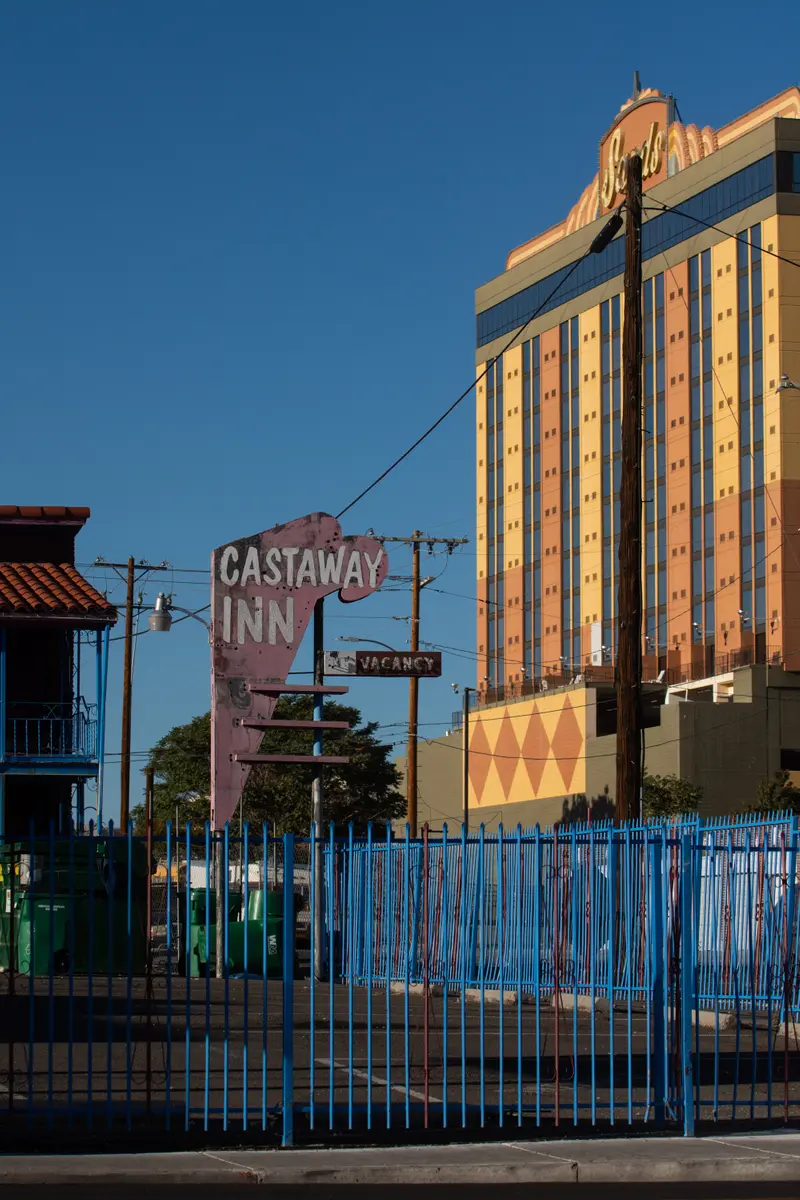

Jacobs’ property manager called a meeting of the Nystrom House tenants one day in mid-2018. She served free barbecue and told them they would need to find new places to live. She said she’d help.
Block, like hundreds of others in motels and boarding houses bought by Jacobs in the last five years, was thrust into Nevada’s brutal affordable housing shortage — a crisis that is among the most severe in the country for extremely low-income renters, according to the National Low Income Housing Coalition.
A ProPublica investigation found that local policies and federal tax breaks have accelerated demolition of motels and other properties where extremely low-income residents live, while doing little to help those who have lost their homes. Unlike some cities, Reno has no policy to deter demolition of affordable housing, and no requirements to replace lost units. Once such housing is gone, it often stays gone.
Though the Reno City Council’s strategic plan lists addressing the housing crisis as one of six goals, it doesn’t specify how many units should be built or what to do with people who’ve lost their homes. Instead they call for “partnering with other agencies” and implementing “proven approaches,” which they don't name.
City leaders have not used Jacobs’ project as leverage to increase and improve affordable housing options. They’ve been reluctant to slow what they see as an opportunity unlike any in recent history to remake the city. They’ve been enthusiastic boosters of the project, waiving requirements and making phone calls to property owners on Jacobs’ behalf.
The city also has made it easier for Jacobs to profit from any development that follows his demolitions. It has deferred building permit fees and extended the time that he can use fee credits for connecting to the city sewers, meaning he can hold vacant land for longer without losing those credits. Meanwhile, a Trump-era federal tax program that applies to development in the neighborhood has created additional incentives for developers to build market-rate or luxury housing, not affordable housing.
In his public rhetoric, Jacobs doesn’t leave room for the idea that the buildings he demolishes are anything but cesspools.
“The motels in the area that we demolished were structures that no one should have to live in, and rented for $1,400-$1,500” a month, Jacobs said in a written response to ProPublica’s questions. (He declined an in-person interview.) Jacobs said he has spent $400,000 to relocate 280 people who lived in the properties.
“There are only a couple of these properties left in the area, run by local and out of town slumlords. The increasing value of the land in the area will ultimately cause these properties to recycle into a higher and different use,” Jacobs said.
But not all of the motels are slums and some charge far less than $1,400 a month. While their number is dwindling, more than 50 remain citywide. As of February, an estimated 2,550 people lived in Reno’s motels.
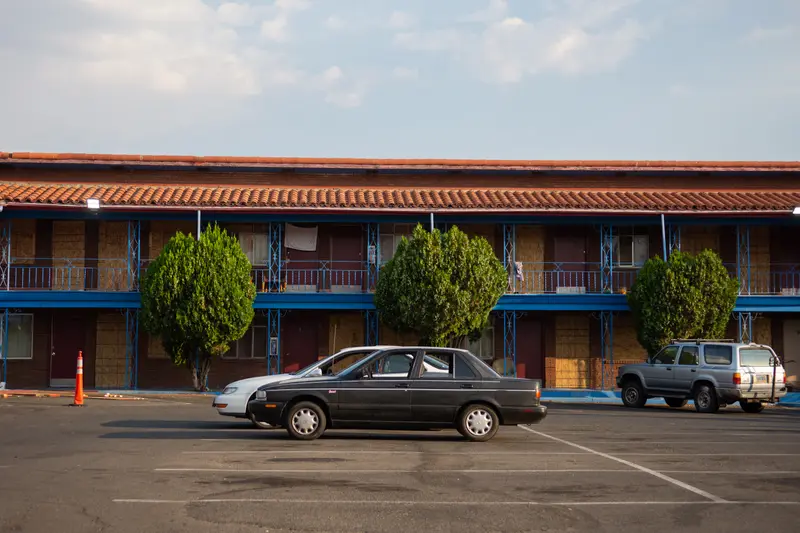
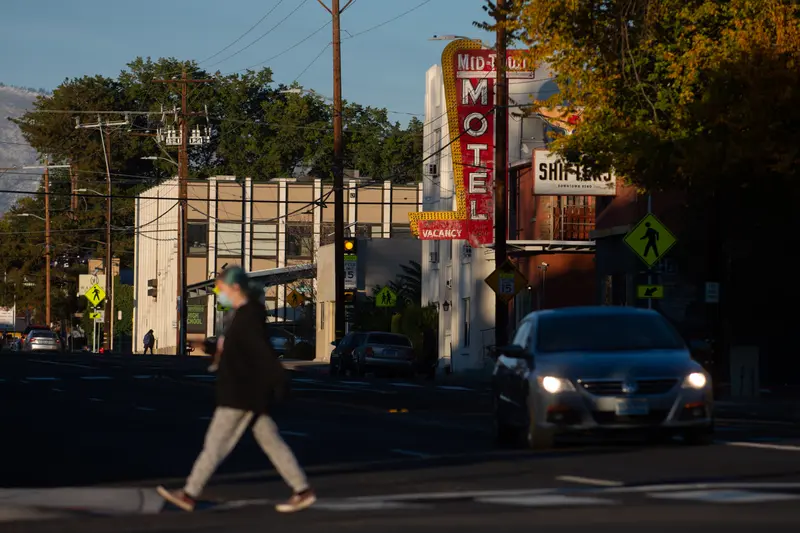
Reno is not the only city in the region facing a shortage of low-income housing. The crisis is particularly acute in cities like Denver, Phoenix, Salt Lake City, Colorado Springs and Tucson, in part, because the region started with far less public housing than the national average. From the 1930s to the 1960s, when the federal government was more focused on building public housing for the poor, Southwestern cities were in their infancy and federal resources largely went to bigger, more established cities. Today, Arizona ranks last in public housing units per 1,000 people, according to U.S. Department of Housing and Urban Development data. Nevada and Utah also rank near the bottom.
In Reno, these dynamics are playing out across 15 blocks of downtown, where city government has allowed the demolition of nearly 600 units of last-resort housing in exchange for Jacobs’ inchoate promise of a grand $1.8 billion entertainment district. The details of what that district might eventually look like have changed repeatedly. Most recently, Jacobs has promised a hub of hotels, restaurants and condo towers — though he’s made little progress on any of it.
So far, the developer has purchased more than 100 parcels, including 19 motels — 14 of which have been demolished.
Reno officials have not taken issue with the displacement of the motels’ residents. Instead, the mayor and some council members have cheered the demolitions, even as housing advocates have pleaded with them to preserve and update the buildings or create alternative housing before turning people out of their homes. Only 326 subsidized housing units have been built in Reno during the last six years, an amount that failed to keep pace with the city’s growth.
“That housing was not affordable housing. That housing was horrific,” Reno Mayor Hillary Schieve said of the buildings demolished by Jacobs. “It’s wrong to continue to say we took away people’s housing. Honestly, what happened, it needed to happen a long time ago. We let it go on way too long and subjected people to horrific conditions for a very long time and that’s what we should be ashamed of.”
Much of the land purchased by Jacobs remains vacant. A few of the parcels, including where Nystrom House stood, have been converted to parking lots. Some are adorned with sculptures from the annual Burning Man event: a 35-foot polar bear made of car hoods; a 12-ton steel Mongolian warrior; a pair of dancing bumblebees in ballet slippers. Jacobs lined one recently cleared block with replicas of Reno’s historic neon signs, some bearing monikers of the demolished motels. The people who used to live in those motels refer to the row of neon replicas as the sign graveyard. Jacobs calls it the Glow Plaza.
Although Jacobs appears to have helped some former tenants find new housing, some who resided in buildings he demolished have ended up living in their cars, on the banks of the Truckee River or in similarly decrepit motel rooms.
In the three years since Block was forced to leave Nystrom House, he’s been shuffled from room to room by Jacobs’ property manager. His options are dwindling. He has received an eviction notice from Jacobs’ company for his current residence and is once again trying to stay one step ahead of homelessness.
Developing With the Help of Public Subsidies
When Jacobs first entered the Reno market, he had begun building an empire of small casinos and gambling halls in three states. The scion of a wealthy family of Ohio real estate moguls, he also had a Cleveland redevelopment project under his belt: a riverfront entertainment complex.
In 2001, Jacobs bought his first Reno property, the Gold Dust West, a small casino that catered to locals. If he had plans beyond that, he kept them quiet. But 15 years later, he used limited liability companies that shielded his identity to begin assembling land around that casino. He also brokered a $26 million deal to buy a much larger hotel and casino three blocks to the east: the Sands Regency.
Since then, Jacobs has bought every parcel he could in between his casinos, using them as collateral for the $435 million in debt carried by his company, according to property records.
Once he bought the Sands, Jacobs could no longer keep his acquisitions quiet. Initially, Jacobs offered few details. He simply told the public he planned to remodel the Sands Regency and build a $500 million mixed-use entertainment project called the Fountain District. The district might include up to 300 housing units, he said at the time.
Even with scant details, Jacobs’ plan appealed to city leaders who had spent decades trying to remake Reno.
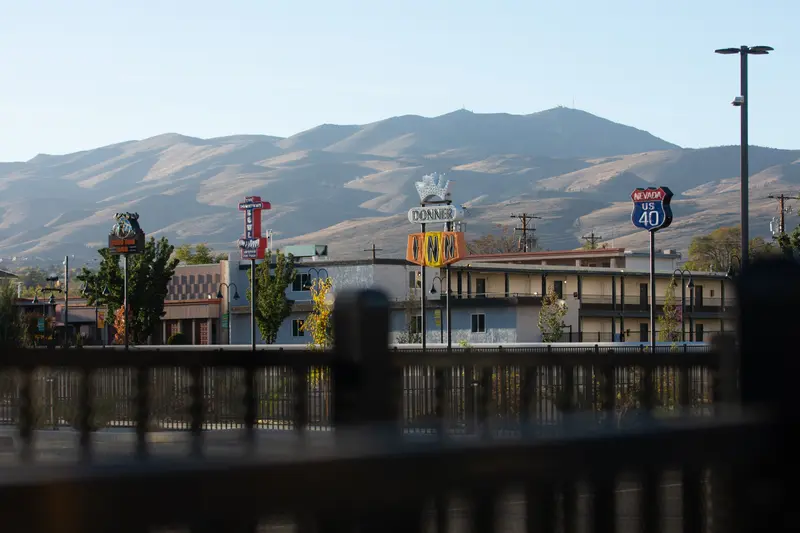
Once the booming gambling capital of the state, the city had seen tourism, the economic lifeblood of its downtown, go into steep decline since the early 2000s. Las Vegas emerged as the country’s leading gambling resort city, and Native American casinos in California had siphoned away many regional visitors. But Jacobs saw an opportunity.
“After the 2010 recession I realized that the California Native American casino impact on Reno had bottomed out and I believed that growth and opportunity lay ahead for Reno,” Jacobs told ProPublica.
Today Jacobs calls his project The Neon Line District. He says the project will include hotels, restaurants and up to 3,000 housing units — 10 times the number in the original plan. There could be an outdoor amphitheater. Most recently he said he might add a zip line.
In Reno, Jacobs is following the same strategy he’s used in the past: relying on public subsidies to further his development efforts.
In the 1980s, while serving a term as an Ohio state lawmaker, Jacobs sponsored unsuccessful legislation to publicly finance a Cleveland stadium project he and his partners were pitching, according to the Akron Beacon Journal. Later, his family and their partners used voter-approved sin tax revenue to build Jacobs Field — now Progressive Field, home of the Cleveland Guardians, a team Jacobs’ father used to own. (After his term in the Ohio Legislature, Jacobs ran unsuccessfully for state treasurer. His campaign consultant: Roger Stone.)
In the 1990s, Jacobs asked for $4 million in improvements from Columbus, Ohio, for a proposed development there. He told the Cincinnati Enquirer that he might need the city to use eminent domain to help him acquire land. That development never materialized. In Toledo, Ohio, Jacobs proposed building an entertainment district at a declining mall, saying he would need city and state financing. That project also never happened. Jacobs told ProPublica he had “conversations” with both cities about “public-private partnerships,” but a “national recession” put an end to both ideas.
When he started buying motels in Reno, Jacobs began contributing to Reno council members’ campaigns, giving to those who supported his project and to the opponents of those who didn’t. Since 2017, he’s contributed $33,250 to Reno council candidates. Mayor Schieve got the majority of that money: $21,500.
Jacobs also hired as his lobbyist a former Reno city council member. Referred to by some city staff as the “eighth council member,” Jessica Sferrazza has ties to key city employees and is a close friend of Schieve, a fact the mayor discloses publicly every time the council votes on Jacobs’ project. Jacobs also hired an experienced city planning lawyer, Garrett Gordon, with a long history of helping developers get their projects approved by the City Council.


Jacobs and his team have won public subsidies while limiting public input. According to statements by both Jacobs and council members, many of the conversations about his project took place in private. Jacobs refused a council member’s request for a town-hall-style meeting prior to approval of his subsidy requests. And in 2018, his company withdrew support for a community-driven design plan for that part of downtown. Eventually, the city nixed the plan. Council member Jenny Brekhus said it was done at Jacobs’ request.
“The assistant city manager had conversations with the Jacobs group and their consultants and told me that Jacobs did not want this planning effort because they were, quote, ‘afraid of losing control of planning in the area,’” Brekhus said.
The assistant city manager told ProPublica Jacobs withdrew support for the community plan because he was worried Brekhus, a vocal critic of Jacobs, would use it to thwart his project.
As a result, there has been no comprehensive effort to solicit public input on the demolitions or on how to increase affordable housing in the district.
Schieve denied her support for the project has been influenced by Jacobs’ campaign contributions or choice of lobbyist.
“I approve good projects. I don’t approve projects based on relationships,” she said.
“My Name Is Doug and I’m With the City of Reno”
Those eager to see downtown rescued from decay are anxious to see construction begin. “I’m sitting there watching it like I’m across the street from Disneyland,” said one nearby property owner. “I hope something stupendous happens.”
But not all property owners want to sell, even at the prices Jacobs is offering. (He paid the owners of one motel five times what they had bought it for in 2012, according to assessor records.)
In these situations, Jacobs has again turned to City Hall.
When Jacobs started sniffing around the Midtown Motel on West Second Street, its owner, Kathie Mead, didn’t give it much thought. She wasn’t interested in selling, leasing or signing an option agreement.
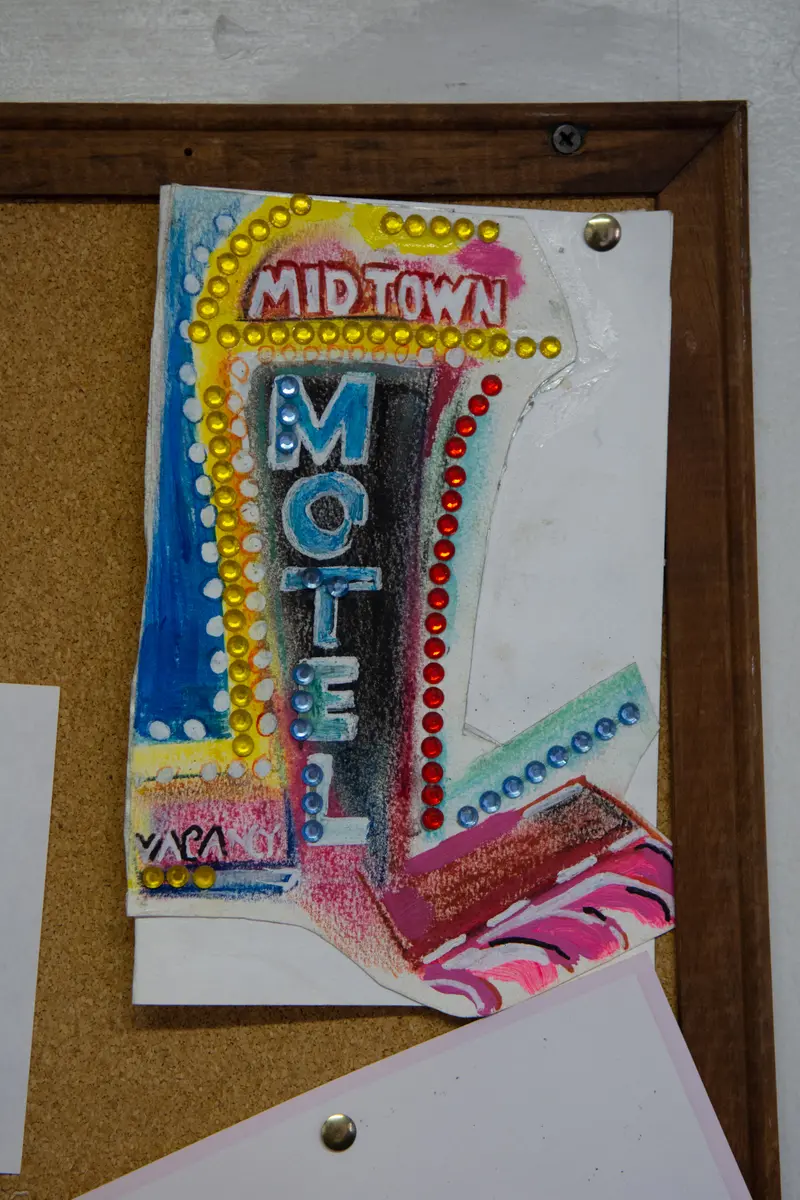
In addition to providing retirement income for Mead and her husband, the Midtown Motel serves an important need in the community. A shortage of housing in Reno has driven costs higher. The vacancy rate for rentals is 1.6%, significantly tighter than the regional average of 4.4%. The national average is 5.8%. As a result, the average rent in Reno is $1,600 a month.
Mead’s rooms rent for far less and have become a place for those who either can’t afford, can’t qualify for or can’t find a home in Reno’s market. She’s rented to some tenants for more than a decade and kept their rent low. Some pay as little as $650 a month.
She continued to ignore calls from Jacobs and his people. But on Aug. 30, a different call came in. She recognized it as a city government phone number. She answered.
“My name is Doug, and I’m with the city of Reno,” the caller said, according to Mead.
Doug wanted to know if Mead would meet with him and Jacobs that Thursday on the 17th floor of the Sands. He neglected to mention his job title: city manager.
“I’m really baffled with what the city of Reno has to do with this,” Mead said she told Reno City Manager Doug Thornley. “He said, ‘No, no. We set up meetings like this all the time. It’s just to get your questions answered.’”
Mead refused the meeting. But the call left her unsettled. “Is this some kind of pressure? Are they telling me they are going to take my property if I don’t agree to sell to this person?” she said.
In an interview with ProPublica, Thornley denied calling Mead to exert pressure to sell to Jacobs. At the request of Jacobs’ representatives, Thornley said, he had reached out to “several” property owners who had been ignoring the developer’s calls. Each one turned him down.
“I have never been part of a discussion involving the Jacobs folks or another property owner on whether or not a property would, should, could be available for sale,” Thornley said. “That’s not me. That’s not my business.”
Contrary to what Jacobs said about Reno motel owners, Mead hardly fits the definition of a slumlord. Her motel is not the subject of repeated code violations. And she keeps her prices low, especially for long-term tenants.
Cecilia DeRush never dreamed she’d spend her retirement in a weekly motel. She used to own transmission repair shops, where she worked as both bookkeeper and transmission rebuilder. But for the past eight years, she and her partner, Karl Hager, have lived at the Midtown Motel. They pay $650 in rent for a place with a main room big enough for a bed, small couch, chest of drawers and TV stand. There’s a small kitchen, where DeRush keeps a pot of coffee brewing for Hager, who sips constantly as he watches television. The walls are decorated with artwork of Nevada’s iconic wild horses and family photos.
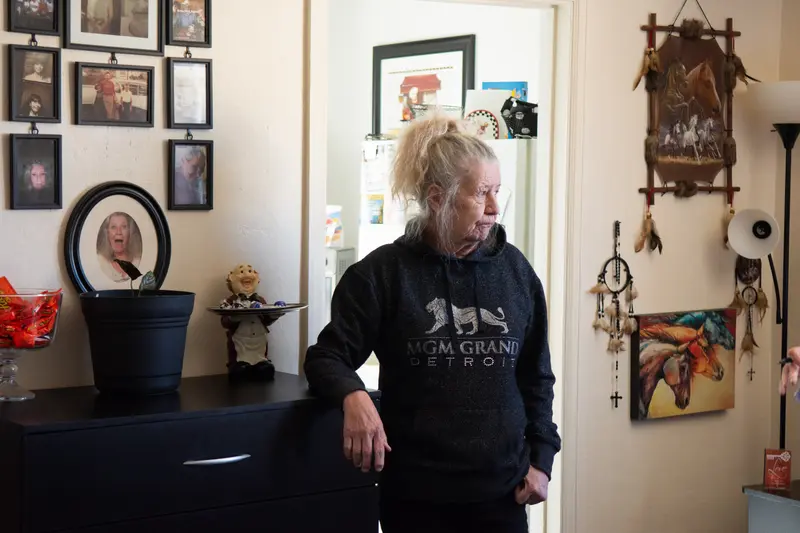
DeRush knows Jacobs has been pushing Mead to sell. She’s confident Mead will fend him off.
“If he got it, he would tear it down,” she said, shaking her head at the thought of trying to afford rent at a typical apartment on their $1,400 in monthly income. “Can he get his claws in deep enough to force her to sell? That’s the question.”
Lost Leverage
Jacobs' aggressive land acquisition and ambitious plans have given Reno leverage it could use to address its crisis — largely because he wants public assistance to build the project. In exchange for his demands for discounted land, waived or delayed building fees and subsidies from future tax revenue, the city could require him to provide affordable housing.
This summer, it appeared the city might do just that. An early draft of a development agreement obtained by ProPublica would have required Jacobs to make 15% of all new housing in the district affordable — a requirement that could have replaced three-quarters of the demolished housing units.
In mid-October, the City Council scheduled a key vote on the development agreement that would spell out which financial and regulatory incentives Jacobs would be granted by the city and what he would do in return. That morning, dozens of people arrived at City Hall. Some wanted information about what Jacobs would build. Some thought the council should help get the entertainment district off the ground.
But others were there to urge the council to better care for the people being displaced by Jacobs: Was the council willing to use its leverage with the developer to address the city’s dwindling supply of affordable housing?
Four hours into the meeting, the council began discussing the agreement. Everyone who wanted to comment on the project had left.
But one key figure had just arrived: Jacobs.

It was a rare appearance at a public meeting for him. Wearing pressed blue jeans, a navy suit coat and a checked shirt, Jacobs took a seat in the middle of the nearly empty room.
Although most of the public had departed, under the council’s rules it was required to play public comments left by voicemail. As Jacobs sat impassively, the voice of George Campagnoni filled the chambers.
Campagnoni had lived in downtown’s Courtyard Inn when Jacobs bought it. At one point, Jacobs’ property manager told Campagnoni and his neighbors they’d have a year to vacate.
“One month later, they’re kicking us out, telling us we had to move, we had to get out of there,” Campagnoni said. Nearly three years after they were forced out, the motel still stands, but it’s empty. That fact rankles Campagnoni, whose rent is almost 50% higher in his new room in a downtown apartment building.
“They have done nothing but left vacant, dirty lots all over the city of Reno,” he said. “They do not deserve any compensation.”
(During an interview later in his tiny studio apartment, Campagnoni chuckled when told Jacobs had been present to hear his comments. “Good! Good!” he said.)

In early negotiations with the city, Jacobs had asked for a nearly $3 million discount on city property, but ultimately paid market rate in exchange for fewer restrictions on how he could use the land. He had also asked for $20 million of the future property tax revenue generated within his district, but set aside that request for later.
At this meeting, Jacobs asked for initial approval for streetscape design elements, including special lighting, signage and skyways. He also wanted $4.7 million in credits for pedestrian amenities and more time to use $1.6 million in sewer credits earned when he demolished his motels. Usually the city gives a landowner five years after demolishing a building to reconnect new construction to the sewer system without paying any fees. Jacobs wanted 20 years, an incentive that would allow him to sit on vacant land for two decades without losing the credits.
In return for any of these requests, the council could have demanded the construction of affordable housing. Instead, the city gave Jacobs nearly everything he asked for without requiring the replacement of any low-income housing.
The council did reject Jacobs’ request for 20 years to use his soon-to-expire sewer credits, instead giving him an additional five years. And it added a requirement that he apply for building permits for 63 condominium units within a year. But the 15% affordable housing requirement wasn’t part of the final agreement.
Jacobs had steered the city away from using the project to advance its housing goals. He declined to comment on why he didn’t agree to the affordable housing requirement in the draft development agreement.
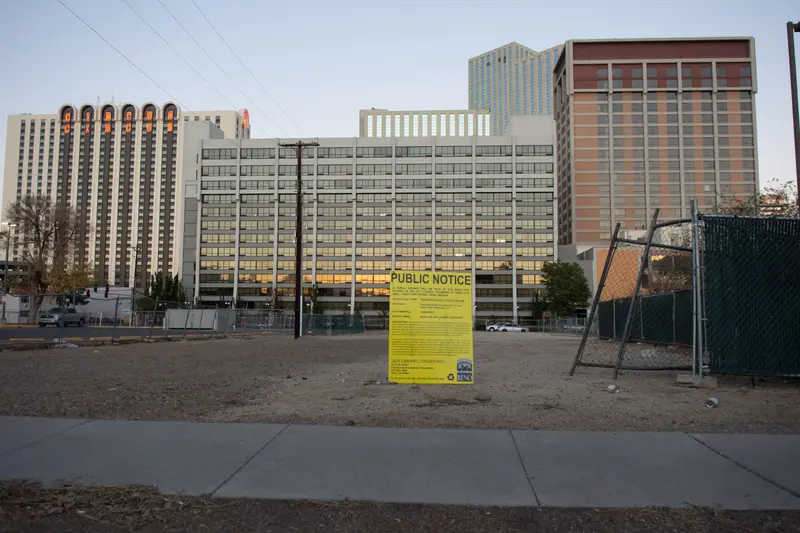
In Thornley’s view, the best way for Reno to increase its stock of affordable housing is by adopting citywide ordinances that make it easier to build new units, or by requiring all housing developers to include some affordable units, not by leveraging one project.
“That would go a longer way toward development and preserving the naturally occurring affordable housing than any sort of requirement in an agreement,” Thornley said.
But that has also been a challenge. In 1999, the Legislature authorized inclusionary zoning, which requires new developments to include some affordable units, but no Nevada cities have actually adopted such an ordinance. Earlier this year, lawmakers killed a bill that would have allowed cities to require developers to pay fees to fund affordable housing in lieu of requiring them to build it directly. The city of Reno has passed several smaller initiatives to address housing, such as density bonuses, which let developers build more units than zoning allows, reduced parking requirements for affordable projects and fee deferrals.
Reno’s affordable housing shortage is so severe, however, that the City Council would be justified in more aggressively leveraging individual projects to address it, said Christine Hess, executive director of the Nevada Housing Coalition.
“The opportunity to ask the developer to contribute truly affordable units, meaning units that have some income restrictions, would be helpful,” Hess said. “Private developers are a really important part of the solution. ... Those units don’t build themselves.”
Jacobs hasn’t ignored the housing crisis entirely. He’s promised to set aside as affordable 10% of any housing his company builds and operates — for example, Renova Flats, the one motel he has renovated to market-rate housing. Renova Flats’ deed, however, doesn’t require any affordable housing or income restrictions. The only thing holding Jacobs to it is his word.
Renova Flats is only 46 units, and Jacobs’ representatives have indicated he has little interest in being a residential landlord. They said he’d much rather focus on the entertainment aspects of his project and sell excess assembled land to housing developers. For those developments, his promise that 10% of the units will be affordable wouldn’t apply.
Jacobs has donated $1.5 million to the Reno Housing Authority, which went toward a $13 million, 44-unit senior housing project. And Jacobs counters criticism of his housing demolition by pointing out he did not exercise an option to buy and renovate a subsidized housing project on the edge of his Glow Plaza called the Sarrazin Arms apartments.
In an interview with ProPublica, Mayor Schieve said she’s wary of requiring landowners to replace demolished housing, because it could hinder development. She agreed the city should develop a better policy to help displaced residents.
“I do think we have not handled it the best,” she said.
But so far, she’s relied on private conversations with Jacobs and his representatives to ensure they are helping residents rather than spearheading a policy change.
“Gentrification on Steroids”
Federal programs still exist to encourage private construction of affordable projects and rehabilitate deteriorating housing stock — resources that cities can marshal to address shortages. But on the land assembled by Jacobs, federal policy is working against Reno’s affordable housing goals.
Reno’s downtown is in a special tax zone for low-income census tracts, a designation that can promote demolition of affordable housing in favor of investment — any investment. In February 2018, city officials nominated a handful of qualifying census tracts for the then-new federal Opportunity Zone program. According to emails obtained by ProPublica, city officials put Jacobs’ land at the top of the list they sent to the governor’s office. The census tract where it’s located met the federal criteria for poverty rate and median income. The fact that projects by Jacobs and others had already been proposed for the area made it even more desirable to the governor’s office for the designation.
This June, the U.S. Treasury Department certified it as an Opportunity Zone.
Under Opportunity Zone rules, investors in Jacobs’ project can get a deferral and discount on paying taxes on capital gains invested in the zone. Even bigger tax breaks come in a decade, when any subsequent gains on that initial investment become tax-free. That provision could, in this case, end up working against affordable housing development.
Opportunity Zones take an “agnostic” approach to investment, operating under the belief that “investment equals benefits regardless of what that investment is,” said Urban Institute senior fellow Brett Theodos. Opportunity Zones do not prioritize the social good.
Because the benefit is directly proportional to the size of the investment gains, the program tends to discourage projects that won’t generate a large profit. Affordable housing development is not an enterprise that generates large profits.
“Opportunity Zones are a tool, it’s like a hammer,” Theodos said. “You can use a hammer to build a house or you can use a hammer to tear one down.
“Maybe that was not all high-quality housing, but until we provide an alternative, even housing of last resort is housing. It’s better than a shelter. It’s better than under a bridge.”
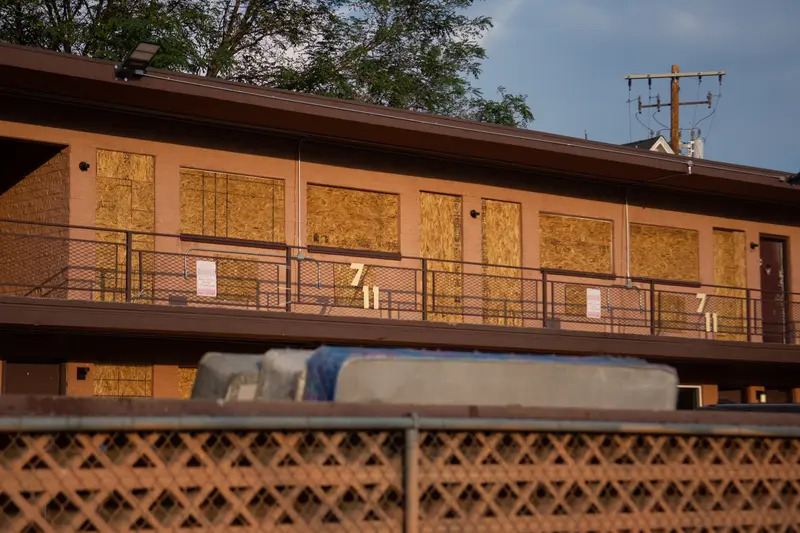
The Opportunity Zone’s influence on Reno’s motel demolitions is reminiscent of the 1990s, when the federal government incentivized cities to demolish decaying public housing projects. The stated intent of the HOPE VI program was to “eradicate severely distressed” public housing and build subsidized units in mixed-income developments. Tens of thousands of such units were demolished across the country, while only a fraction were replaced.
In Utah, housing advocates have seen a similar dynamic play out in Opportunity Zones. An established mobile home park in the city of Layton was uprooted for an incoming development, they said.
“The people who live there are pretty much screwed,” said Francisca Blanc, advocacy and outreach coordinator for the Utah Housing Coalition, who refers to Opportunity Zones as “gentrification on steroids.”
Housing experts refer to low-rent homes that don’t come with subsidies or rent controls — like Reno’s weekly motels — as “naturally occurring affordable housing.” Given the struggle to add affordable housing, the preservation and rehabilitation of such units is key to addressing the crisis.
“In areas where there is high demand for housing, that affordability is very much at risk,” said Andrew Aurand, vice president for research at the National Low Income Housing Coalition.
Because the Opportunity Zone law requires almost no public reporting, it is difficult for researchers to determine how effective the tax incentives are at spurring investment in underserved areas, Theodos said. A qualitative study by the Urban Institute found multiple barriers to “mission-oriented” projects such as affordable housing. One of them was that such projects “yield below market returns that most OZ investors appear unwilling to accept.”
Previous reporting by ProPublica and others revealed that the wealthy have used political connections to designate areas with existing investments as Opportunity Zones, taking tax breaks meant to help the poor. Again, because of the lack of reporting requirements, it’s impossible to know how widespread that abuse is.
Jacobs told ProPublica he is not using Opportunity Zone financing. The rules preclude casinos from receiving the tax breaks. But the designation alone makes his assembled land more valuable.
Some of the developers considering buying those sites “will include OZ credits in their sources of financing,” Jacobs said.
Incentives, both local and federal, that Jacobs has cobbled together have already yielded gains. In September, Jacobs sold one of his parcels for 60% more than he paid for it 18 months ago.
“I Just Wish He Hadn’t Ever Come Here”
When Jacobs moved the tenants out of Nystrom House, Block landed at the Lido Inn, which Jacobs also demolished, then at a former wedding chapel across from Jacobs’ Glow Plaza.
While Block lived at the chapel, Jacobs cleared the land where Nystrom House stood. Built in 1875, it had served as a boarding house for out-of-state divorce seekers in the early 20th century and had been put on the National Register of Historic Places. That had given Block a false sense of security when he moved in.
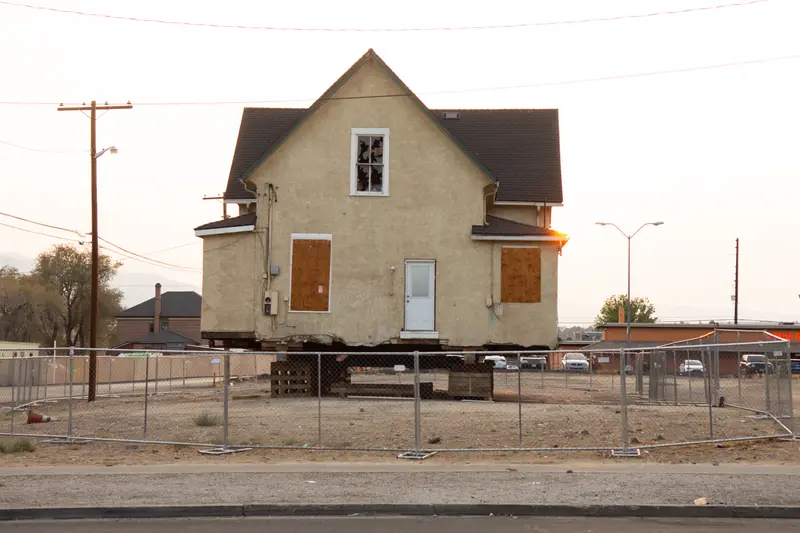
“I thought maybe this is some place that is going to be here for a while,” Block said.
Rather than demolishing the house, Jacobs moved it to an empty lot next door to the chapel, where Block was living. The house still sits there: empty, resting slightly cockeyed on a temporary support structure, many of its windows shattered. With the house gone, Jacobs plowed under the fruit trees and shrubbery that had created a neighborhood oasis.
“He just leveled all the properties there on that street,” Block said. “That’s the thing that made me, like, not even want to know this person. I just wish he hadn’t ever come here.”
Block’s time at the chapel didn’t last. Jacobs’ property manager moved him to Renova Flats. The average rent there is $1,000 a month. The property manager gave Block a substantial discount so he could afford a room.
Block paid on time and made progress paying off fees he was charged to move in. But in July, he came home from work to find a no-cause eviction notice on his door.
The property manager told him the rent discount wasn’t permanent, he said. She gave him additional time to find a place and put his name on the waiting list for a room at a transitional housing project in an industrial area. Block doesn’t blame the property manager, saying she’s done her best to help. His ire rests with Jacobs.
It’s “like we don’t matter,” Block said. “It just feels like we’re kinda in the way. Like they’re just trying to move people that don’t make a lot of money. But, being born and raised here, I just feel like that’s not fair. I’ve invested the time in my life to making this a better place.”

Dec. 10, 2021: The caption with the first image misstated the origin of the pictured bricks. They were from the demolition of the Reno Mercantile building, not piled in a dirt lot where the Town House Motor Lodge once stood.
Alex Mierjeski contributed research.

















